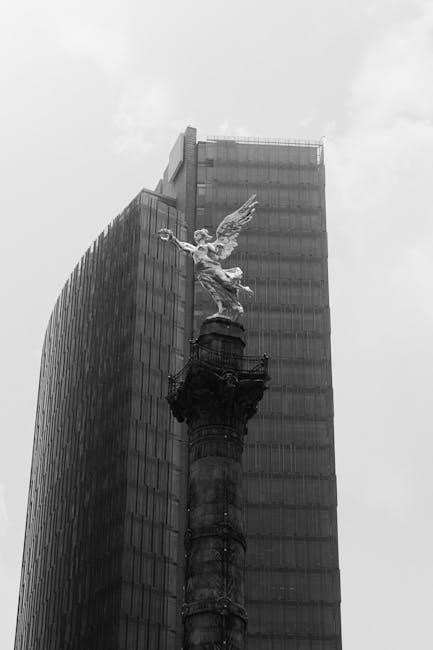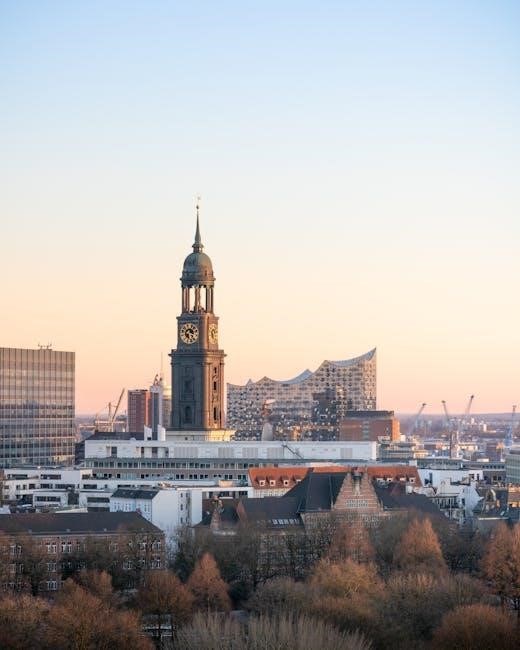Guido Reni (1575-1642) was a prominent Baroque painter known for his elegant style. His Archangel Michael (1635) depicts the celestial battle, capturing the triumph of good over evil with dramatic flair and religious significance.

Commission and Historical Context
The Archangel Michael was commissioned by Cardinal Antonio Barberini, a prominent figure in 17th-century Rome and brother of Pope Urban VIII, for the Church of Santa Maria della Concezione. Painted in 1635, the work was part of a larger decorative scheme for the church, reflecting the Barberini family’s influence and patronage of the arts during the Baroque era.
Reni’s masterpiece was created during a period of religious and artistic transformation in Italy. The painting’s size, 293×202 cm, and its oil-on-canvas medium, indicate its grandeur and suitability for a public religious space. The artwork was intended to inspire devotion and reinforce Catholic doctrine, depicting a celestial battle between good and evil.
Historically, the painting signifies the cultural and religious values of early 17th-century Rome. Its dramatic composition and emotional intensity captured the spiritual fervor of the time, aligning with the Counter-Reformation’s emphasis on vivid religious imagery. The commission also highlights Reni’s reputation as a leading artist of his era, trusted with significant religious projects.
The painting’s completion in 1635 marks a pivotal moment in Reni’s career, solidifying his legacy as a master of Baroque art. Its enduring presence in the Church of Santa Maria della Concezione underscores its historical and cultural significance, making it a cornerstone of religious art from the period.
Artistic Style and Influences
Guido Reni’s artistic style blended Baroque grandeur with elegant harmonies, influenced by Caravaggio’s dramatic lighting. His refined technique emphasized dynamic compositions and emotional depth, creating a balance of drama and grace in Archangel Michael.
Baroque Elements
Guido Reni’s Archangel Michael embodies the dramatic intensity and emotional depth characteristic of the Baroque style. The painting features strong contrasts of light and shadow, known as chiaroscuro, to heighten the tension between the archangel and Satan. The dynamic composition, with Michael’s poised stance and the swirling drapery, creates a sense of movement and energy. Reni’s use of rich colors and intricate details, such as the textures of Michael’s armor and the folds of his cloak, adds to the painting’s visual splendor. The dramatic struggle between good and evil is a quintessential Baroque theme, emphasizing the triumph of divine order over chaos. Reni’s masterful execution of these elements ensures the painting is both visually striking and emotionally engaging, capturing the viewer’s attention and conveying the spiritual significance of the scene. The Baroque style’s emphasis on grandeur and theatricality is evident throughout the work, making it a compelling example of 17th-century artistry.
Influence of Caravaggio
Guido Reni’s Archangel Michael reflects the influence of Caravaggio, a dominant figure in Baroque art, particularly in its dramatic use of chiaroscuro. While Reni’s style is more refined and classical, the intense emotional depth and dynamic composition in the painting echo Caravaggio’s innovative approach. The stark contrasts of light and shadow, as seen in the illumination of Michael’s figure and the dark, chaotic form of Satan, are reminiscent of Caravaggio’s dramatic lighting. Additionally, the emotional intensity of the scene—Michael’s determined expression and the struggle depicted—aligns with Caravaggio’s ability to convey powerful emotions through his works. However, Reni’s interpretation is softer and more harmonious, blending Caravaggio’s dramatic elements with his own classical ideals. This fusion of styles highlights Reni’s ability to adapt influences while maintaining his unique artistic voice, creating a work that is both emotionally compelling and visually captivating.

Symbolism and Religious Significance
Guido Reni’s Archangel Michael is a profound depiction of the celestial battle between good and evil, rich in religious symbolism. The painting illustrates the Archangel Michael defeating Satan, often interpreted as a representation of divine justice and the triumph of righteousness. Michael, depicted as a strong, radiant figure, embodies protection and divine authority, while Satan, shown as a monstrous, defeated creature, symbolizes evil and chaos. The artwork draws from biblical narratives, particularly the Book of Revelation, where Michael leads the heavenly forces against the dragon, a metaphor for Satan. The scales of justice held by Michael further emphasize the theme of moral judgment. The painting’s religious significance lies in its ability to inspire devotion and reinforce Catholic teachings about the struggle between light and darkness. Its placement in a church underscores its role as a spiritual tool, reminding viewers of the divine protection offered by the Archangel. The work remains a powerful visual sermon, evoking faith and hope in its audience.

Painting Details and Dimensions
Guido Reni’s Archangel Michael is executed in oil on canvas, measuring 293 cm by 202 cm. This large-scale work was specifically designed for the Church of Santa Maria della Concezione in Rome, where it remains a central piece. The painting’s dimensions were chosen to dominate the chapel, creating an imposing visual impact that draws the viewer’s attention upward. The canvas’s size reflects the grandeur and importance of the subject matter, aligning with the Baroque tradition of using scale to convey divine majesty. The oil medium allows for rich, vivid colors and fine details, enhancing the dramatic tension between light and shadow. Reni’s meticulous brushwork and composition ensure that every element, from Michael’s flowing drapery to the defeated form of Satan, is rendered with clarity and precision. The painting’s physical presence complements its spiritual themes, making it a cornerstone of the church’s decorative and devotional program.

Historical Significance and Cultural Impact
Guido Reni’s Archangel Michael holds profound historical and cultural significance as a masterpiece of the Baroque era. Commissioned by Cardinal Antonio Barberini, the painting reflects the religious and artistic ideals of 17th-century Italy. Its depiction of the celestial battle between good and evil resonated deeply with the Catholic Church’s Counter-Reformation themes, emphasizing divine triumph and moral virtue. The work’s dramatic composition and emotional intensity influenced numerous artists, solidifying Reni’s reputation as a leading figure in Baroque art. Beyond its religious context, the painting has become an iconic representation of the struggle between light and darkness, transcending its original purpose to inspire artistic and cultural movements. Today, it remains a cornerstone of art historical studies, celebrated for its technical brilliance and enduring emotional power.

Auction Performance and Market Value
Guido Reni’s Archangel Michael has demonstrated significant auction performance, reflecting its cultural and historical importance. In 2007, the painting was sold at Christie’s for $1.2 million, exceeding its pre-sale estimate of $300,000 ⎼ $400,000. This sale highlighted the artwork’s enduring value and appeal to collectors. The painting’s market value is influenced by its excellent condition, historical provenance, and status as a seminal work of the Baroque period. Its dramatic composition and religious themes continue to attract both private collectors and institutions. The artwork’s cultural significance further elevates its market worth, as it is widely regarded as one of Reni’s most iconic creations. Auction houses and art historians closely monitor its performance, as it remains a benchmark for Baroque art valuation. The painting’s rarity and artistic brilliance ensure its continued relevance in the global art market.

Legacy and Influence in Art History
Guido Reni’s Archangel Michael holds a significant place in art history, showcasing the artist’s mastery of Baroque composition and emotional expression. Reni’s work influenced numerous artists, including those from the Bolognese school, who admired his balance of elegance and dramatic intensity. The painting’s dynamic poses and chiaroscuro techniques became a model for later Baroque artists, emphasizing the triumph of light over darkness. Reni’s depiction of Michael as a Roman soldier combined with angelic grace inspired religious art for centuries, blending spiritual themes with classical aesthetics. His innovative use of color and composition elevated the painting to an iconic status, making it a cornerstone of Baroque art. The artwork’s enduring popularity underscores Reni’s legacy as a leading figure in 17th-century Italian art, ensuring his influence extends to modern artistic interpretations of religious and mythological subjects;
Guido Reni’s Archangel Michael stands as a masterpiece of Baroque art, embodying the era’s dramatic intensity and spiritual depth. The painting’s vivid depiction of the celestial battle between good and evil captivates viewers, blending religious symbolism with artistic brilliance. Reni’s ability to infuse his work with emotional power and technical precision has left a lasting impact on art history. The painting’s enduring popularity reflects its universal themes of triumph and redemption, resonating with audiences across centuries. As a testament to Reni’s skill, Archangel Michael remains a cornerstone of religious and Baroque art, inspiring future generations of artists and art enthusiasts alike. Its legacy underscores Reni’s contribution to the evolution of artistic expression, ensuring his work continues to be celebrated and studied.
